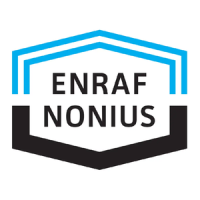
Do you have a question about the Enraf Nonius TensMed S84 and is the answer not in the manual?
| Brand | Enraf Nonius |
|---|---|
| Model | TensMed S84 |
| Category | Fitness Equipment |
| Language | English |
Provides general instructions for operation, practices, maintenance, and parts information for the TensMed S84 unit.
Explains the use of TENS for pain relief, its mechanisms, and benefits.
Lists conditions for which TENS is indicated and contraindications for its use.
Details the use of NMES for muscle rehabilitation and athletic training, including its principles.
Details indications and contraindications for Neuromuscular Electrical Stimulation (NMES).
Identifies and describes the function of each control button on the TensMed S84 device.
Explains the meaning of various symbols displayed on the TensMed S84 screen.
Provides a guided, step-by-step procedure for operating the TensMed S84 stimulator.
Guides the user through the process of creating and using a single, custom program on the device.
Details how to create and use sequential programs, allowing for multi-stage stimulation protocols.
Lists and describes the 32 preset TENS programs available for pain relief.
Lists and describes the 75 preset NMES programs for muscle rehabilitation and training.
Explains how to create and store up to 15 custom programs tailored for specific patient needs.
Provides detailed technical specifications of the TensMed S84 device, including channels, current, programs, and forms.
Explains the meaning and purpose of various symbols used in the manual and on the device.
Details the Electromagnetic Compatibility (EMC) information and standards compliance for the TensMed S84.
Provides guidance on electromagnetic immunity and manufacturer declarations as per standards.
Introduces NMES as a clinical treatment for rehabilitation and athletic training, detailing its applications.
Lists the specific medical conditions and goals for which NMES is indicated.
Provides guidance on the correct placement of electrodes for optimal NMES treatment results.
Explains how to adjust stimulation parameters for effective NMES treatment and patient comfort.
Details NMES programs focused on rehabilitation, including specific programs like ATROPHY.
Outlines NMES protocols for muscle atrophy treatment, focusing on aerobic metabolism and stamina.
Describes NMES programs designed to enhance muscle strength and capacity.
Outlines NMES programs for improving mobility through alternating stimulation of muscle groups.
Explains NMES programs aimed at facilitating muscle movement and coordination.
Lists NMES programs tailored for athletic training and performance enhancement.
Details programs for increasing maximum strength development and muscle mass.
Describes programs for developing high-level force over extended periods and delaying fatigue.
Outlines programs designed to enhance muscle recovery, circulation, and lactic acid elimination.
Explains programs for maintaining muscle tone and serving as a complement to other training.
Details programs that activate circulation through a pumping effect, aiding waste product elimination.
Covers NMES programs for treating urinary incontinence, including urge and mixed types.
Focuses on treating urge incontinence by relaxing the overactive bladder with perineal nerve stimulation.
Describes programs for mixed incontinence, addressing both urge and stress symptoms.
Explains NMES for stress incontinence, targeting perineal muscle function.
Addresses NMES programs specifically for pelvic floor pain management.
Details NMES application for hemiplegic patients, covering various body parts and conditions.
Details NMES application for the shoulder in hemiplegic patients to improve movement and reduce pain.
Outlines NMES protocols for the arm in hemiplegic patients to aid motor skill relearning and reduce spasticity.
Describes NMES for the hip and thigh in hemiplegia, focusing on muscle activation and mobility.
Details NMES application for the lower leg in hemiplegic patients to improve function and manage spasticity.
Explains NMES for reducing spasticity in hemiplegic patients, targeting affected muscles.
Provides guidance on optimal electrode placement for different TENS applications.
Explains how to adjust stimulation parameters for effective TENS treatment and patient comfort.
Differentiates between nociceptive and neurogenic pain and offers treatment considerations for each.
Offers general indications and intensity guidelines for various TENS treatment types.
Details TENS treatments for specific nociceptive pain conditions like rib, spine, and fracture pain.
Outlines TENS parameters for treating neck pain, including intensity and modulation.
Provides TENS treatment details for trapezius muscle pain, specifying parameters.
Details TENS parameters for managing cervical muscle spasms and associated pain.
Explains TENS application for epicondylitis (tennis elbow) treatment parameters.
Lists TENS parameters for treating thoracic back pain, including electrode placement.
Provides TENS treatment parameters for low back pain relief.
Outlines TENS parameters for shoulder pain management.
Details TENS parameters for treating elbow pain.
Lists TENS parameters for wrist pain treatment.
Provides TENS treatment parameters for finger pain.
Outlines TENS parameters for hip pain management.
Details TENS parameters for knee pain treatment.
Explains TENS application for ankle pain treatment parameters.
Describes TENS parameters for cervical rhizopathy, focusing on muscle vibrations.
Outlines TENS treatment for low back and sciatica pain, including parameters and repetitions.
Details TENS parameters for sciatica treatment, focusing on muscle contractions.
Provides TENS parameters for carpal tunnel syndrome treatment.
Outlines TENS parameters for phantom limb pain management.
Details TENS parameters for post-herpetic neuralgia treatment.
Explains TENS application for hemi shoulder pain, considering patient sensitivity.
Outlines TENS parameters for spasticity, considering patient sensitivity.
Provides TENS parameters for post-stroke pain management, type 1.
Details TENS parameters for post-stroke pain management, type 2, focusing on muscle contractions.
Outlines TENS parameters for mononeuropathy treatment.